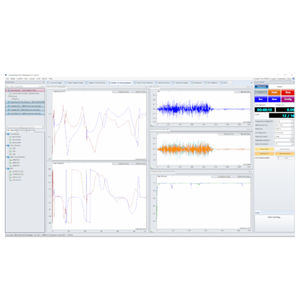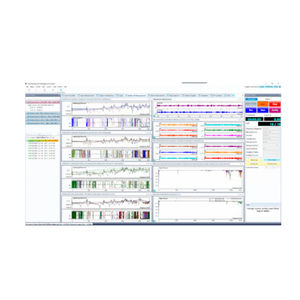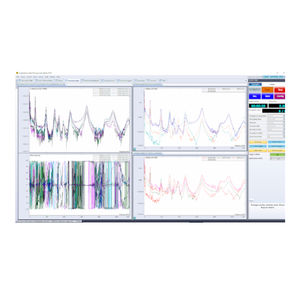

- Company
- Products
- Catalogs
- News & Trends
- Exhibitions
Test software vibration testcomparisonEDM
Add to favorites
Compare this product
Characteristics
- Function
- test, vibration test, comparison, EDM, transcient time history control
- Applications
- EDM
Description
Generate or import transient time waveforms into EDM VCS for replication onto a vibration test control system. Compensation methods include pre-pulse, post-pulse, DC removal and high-pass filters.
Pre-stored profiles include Bellcore Z1 & Z2, Bellcore Z3, Bellcore Z4, (Burst) Sine, Triangle, Chirp, Burst Chirp, White Noise (Burst Random), Sine Beat, Sine Beat (multiple frequency), Door Slam (Ford), Decay sine (linear/angular frequency), Sine Burst.
Test Profiles in Transient Time History
Waveform Type: Sine, triangle, chirp, white noise, triangle burst, bellcore, sine beat, door slam, decayed sine and sine burst.
Chirp is a sine wave that sweeps continuously from the start frequency to the end frequency within one block.
Triangle Bursts conform to commonly used standards for CD player testing in the American and European automotive markets.
Bellcore 1 & 2, 3, and 4 are the seismic time histories required by the Bellcore test specification. When using the Bellcore signals, the RRS (Required Response Spectrum) of the specification is available as a display to allow direct comparison with the control SRS.
Sine Beat is interference between two sine wave of slightly different frequencies, perceived as periodic variations whose rate is the difference between the two frequencies.
Door Slam includes two parameters, acceleration amplitude and decay rate. When the retractor is mounted on a test rig to simulate the vibration effect of vehicle door slamming, and impacted by a force sufficient to activate the vehicle sensor and cause lock up of the retractor, the webbing shall be extractable after one second.
Catalogs
No catalogs are available for this product.
See all of CRYSTAL INSTRUMENTS‘s catalogsOther CRYSTAL INSTRUMENTS products
Environmental and Structural Testing
Related Searches
- Automation software solution
- Management software solution
- Analysis software solution
- Process software solution
- Windows software solution
- Computer-aided design software
- Control software solution
- Real-time software solution
- Online software
- Design software solution
- 3D software solution
- Monitoring software solution
- Interface software
- Measurement software
- Industrial software solution
- Quality software
- Visualization software solution
- Automated software
- Network software solution
- Machine software
*Prices are pre-tax. They exclude delivery charges and customs duties and do not include additional charges for installation or activation options. Prices are indicative only and may vary by country, with changes to the cost of raw materials and exchange rates.





























